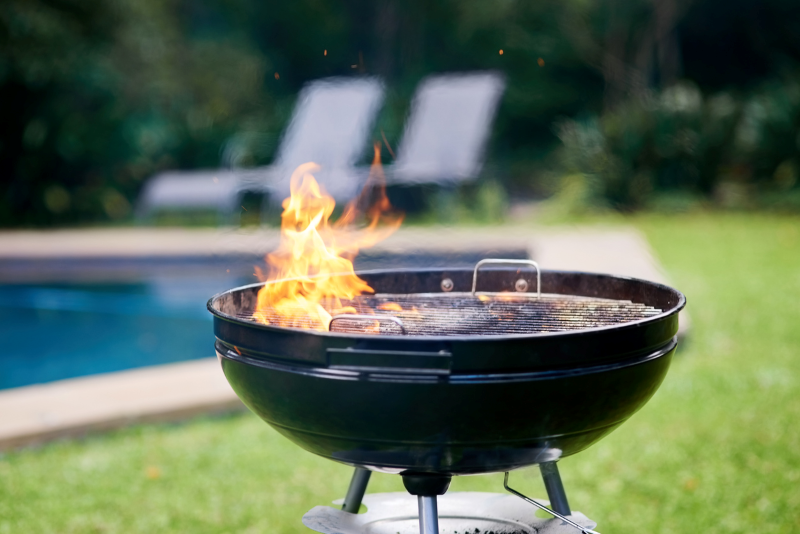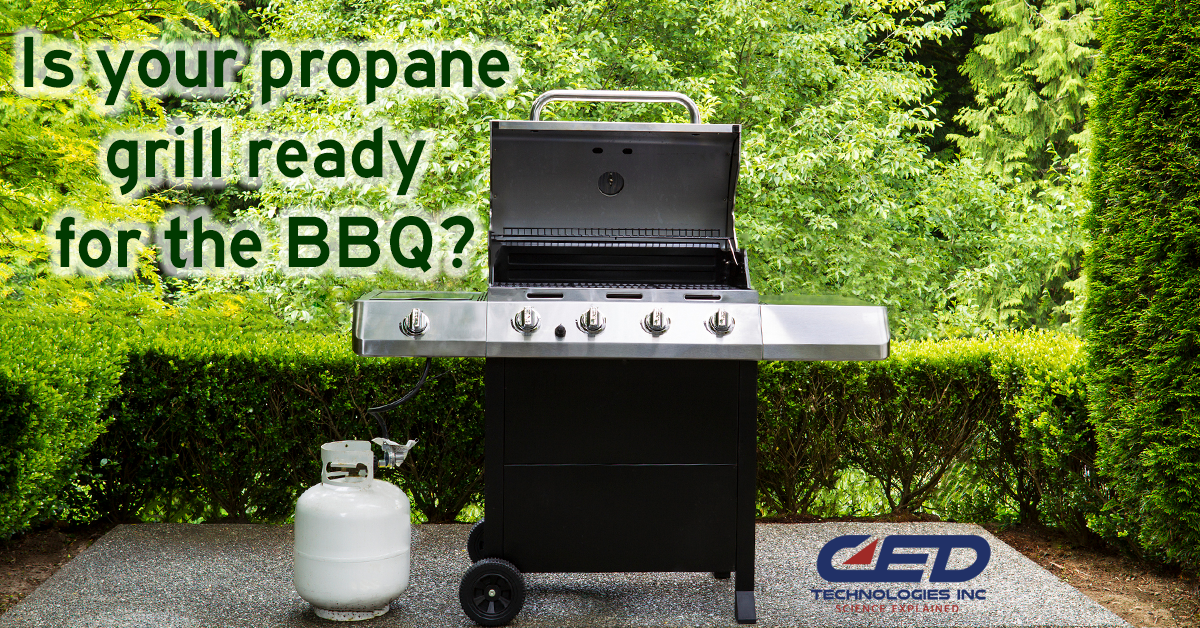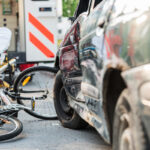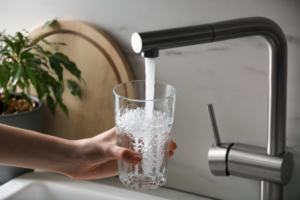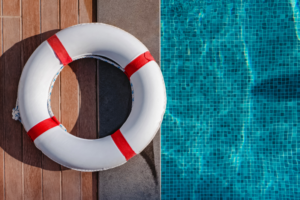Grilling is a summer tradition for many, but it also comes with real safety concerns. Approximately one-fifth of Americans use a grill on a regular basis. Each year, U.S. fire departments respond to an average of 11,421 home fires involving grills, most of them happening in the summer months. These incidents result in an average of two deaths, over 170 injuries, and approximately $172 million in property damage annually. Gas grills are involved in about five out of six grill-related fires.
Most grills sold in the U.S are fueled by propane or charcoal. A smaller number of grills are fueled by natural gas or wood pellets. Electric grills offer a portable option and are often used in both indoor and outdoor spaces.
According to a 2024 study conducted by NielsenIQ, approximately 50% of Americans who grill more than once a week reported using gas grills. Outdoor electric and charcoal grills followed at 42 percent and 37 percent, respectively. Because approximately 53% of respondents reported owning two or more grilling devices, these statistics can exceed 100%. In an era where alternative grilling devices, such as household pizza ovens and smokers, are gaining popularity, understanding all the risks associated with grilling is crucial.
Because gas grills are so widely used, leaks, gas line issues, and operator error are the most common causes of fires. For propane grills, the lower flammability limit (LFL), the concentration of vapor needed to ignite, is just 2 percent. For natural gas, it is 5 percent. Once that level is reached, simply turning on the grill can start a fire, and depending on the conditions, an explosion can occur.
To help you stay safe this season, here is a complete checklist to prepare your grill for summer.
Preparing Your Grill for Summer
✓ Grill Placement
Always use your grill outdoors in an open space at ground level. Keep it away from buildings, overhangs, railings, and anything flammable. At least 10 feet of clearance is recommended. If you are grilling at night, make sure the area is well-lit.
Set up the grill away from where people gather. Children and pets should always stay at least 3 feet from the grill.
According to the NFPA, 44 percent of grill fires that cause property damage happen on balconies or porches. Fires that start in these areas can spread quickly to exterior walls or into concealed spaces.
✓ Propane Tank Check
Make sure your propane tank is in good condition, properly connected, and not expired. If you are storing an extra tank, keep it outside on a flat, shaded surface away from the house.
✓ Gas Leak Inspection
Before using your gas or propane grill, make sure the burners are turned off. Then, check the tank, hose, and connectors for cracks, corrosion, or loose parts. If anything looks damaged, replace it. If you smell a rotten egg odor or hear a hissing sound, you may have a leak. Stop using the grill and tank immediately.
✓ Leak Test
To test for gas leaks, mix equal parts water and dish soap in a spray bottle. With the grill off and the lid open, spray the mixture on the propane regulator, hose, and connectors. Open the gas valve slightly. If you see bubbles, there is a leak, and the part should be replaced. Consumer leak testing solutions can also be purchased at a local hardware store.
✓ Deep Clean
It is essential to clean your grill before the start of summer and again before storing it in the fall.
-
- Gas grills: Remove grates, burner hoods, and grease pans. Scrub them with hot, soapy water or a food-safe degreaser. Use a paint scraper to remove thick buildup from the firebox and lid.
-
- Charcoal grills: Empty out dry ash, hose the grill down, and scrub it clean. Use a degreaser for tough spots and ensure that you clear the bottom vents to maintain proper airflow.
-
- Pellet grills: These need extra care for electronic parts. Keep them dry and clean to avoid damage.
Safe Grilling Practices
Before using your grill, check the weather and wind speed. Avoid using the grill in high winds to minimize the risk of a fast-spreading fire.
When you are ready to light your grill, open the lid first and then turn on the gas tank. Turn the burner control to high and press the ignition button or use a long lighter. If the grill does not light within 5 seconds, turn off the gas and wait 5 minutes before attempting to light it again.
Once the grill is ignited, you can lower the heat to medium or low depending on your meal’s cooking needs. A thermometer amenable to extreme heat can help ensure proper cooking temperatures.
When using the grill, keep a fire extinguisher nearby and have a spray bottle with water for flare-ups. Designate a grill cook to ensure the grill is never left unattended.
After Cooking: Clean-Up
✓ Turn Off and Cool Down
Shut off the gas at both the tank and the control knobs. Let the grill cool completely before cleaning.
✓ Gas Grill Cleaning
While the grates are still warm, scrape them with a wire brush. After the grill has cooled, wipe it down with a damp cloth. Check for grease buildup and inspect burner ports for blockages.
✓ Charcoal Grill Cleaning
Scrape the grates while the coals are still hot. Once everything has cooled down, empty the ash completely. Never pour water on hot coals. Instead, store the ashes in a lidded metal container until thoroughly cooled.
✓ Storage Tips
Use a grill cover to protect your equipment and prevent animals from chewing on fuel lines. Disconnect propane tanks and store them outside in a shaded area, away from living spaces.
In following these safety practices, you will help ensure a safe, memorable, and fire-free grilling season. If you experience a grill-related fire, CED Technologies is available to help. Our experts have extensive experience in fire and explosion investigations, as well as product failure analysis. We can provide a detailed evaluation of the incident to support your case.
